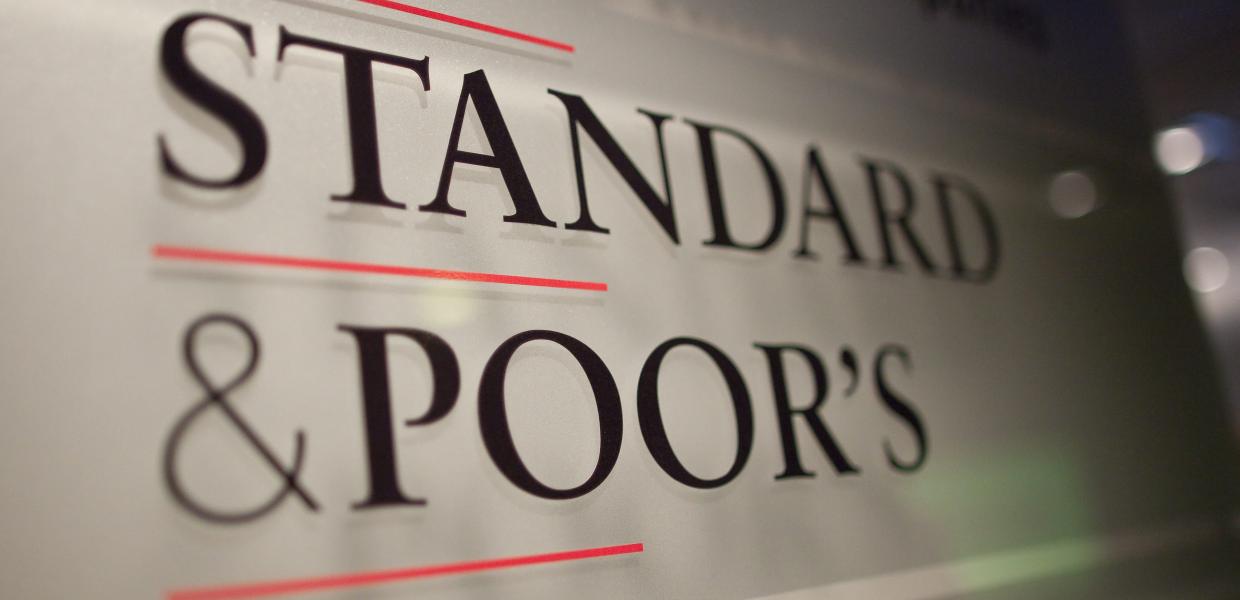$MRK (+0.33%)
$KO (-0.37%)
$PEP (+0.08%)
$COP (-2.45%)
$MDT (-1.09%)
$MDLZ (-0.67%)
$EOG (-1.63%)
$SLB (-0.56%)
$KMB (-0.13%)
$CL (-0.97%)
What should investors look for when it comes to buying the best dividend stocks for 2025?
At Morningstar, we believe that the best dividend stocks are not simply the stocks with the highest dividends or the stocks with the best dividend yields. We recommend that investors look beyond a stock's yield and short-term performance and instead consider stocks with sustainable dividends and buy them when they are undervalued.
"As tempting as they may be, the most attractive returns on the stock market are often illusory," explains Dan Lefkovitz, strategist at Morningstar Indexes. "High dividend yields are often found in risky sectors, industries and companies." Therefore, such high dividend yields are not always sustainable.
David Harrell, the publisher of Morningstar DividendInvestor, empfiehlt,to focus on companies with management teams that support their dividend strategy and to favor companies with competitive advantages or wirtschaftlichen Burggräben to be preferred.
"An economic moat rating is obviously no guarantee of dividends, but we have found some very strong correlations between economic moats and dividend consistency," says Harrell.
Investors looking for good dividend stocks might consider adding undervalued quality dividend stocks to their portfolio.
10 best US dividend stocks to buy
To find the best U.S. dividend stocks, we turn to the Morningstar Dividend Yield Focus Index. The dividend stocks on this list are among the top stocks in the index and were trading in the 4- and 5-star range as of June 13, 2025.
Merck MRK
Coca-Cola KO
PepsiCo PEP
ConocoPhillips COP
Medtronic MDT
Mondelez Global MDLZ
EOG Resources EOG
SLB SLB
Kimberly-Clark KMB
Colgate-Palmolive CL
Below you will find a brief description of the individual low-cost dividend stocks as well as some important Morningstar key figures. All data is valid until October 10, 2025.
Merck
- Morningstar rating: 4 stars
- Morningstar Economic Moat Rating: High
- Morningstar Uncertainty Rating: Medium
- Expected dividend yield: 3.77
- Sector: Pharmaceuticals - General
Merck tops our list of best dividend stocks with a share price 23% below our estimated fair value of $111 per share. Merck continues to see weak demand for its HPV vaccine Gardasil in China, which has dampened revenues this year. Nevertheless, we believe Merck shares are undervalued. The company's balance sheet is solid and low risk. We expect stable future dividends, supported by a payout ratio of nearly 50% of adjusted earnings per share, according to Morningstar Director Karen Andersen.
Coca-Cola
- Morningstar rating: 4 stars
- Morningstar Economic Moat Rating: Broad
- Morningstar Uncertainty Rating: Low
- Expected dividend yield: 3.04
- Sector: Beverages - non-alcoholic
Coca-Cola is the first Dividendenaristokrat on our list of this month's best dividend stocks. Dividend aristocrats are companies that have increased their dividends for at least 25 consecutive years. The company's impressive brand portfolio, pricing power and relationships with retailers underpin its high Economic Moat rating, says Morningstar analyst Dan Su. We expect the dividend payment to increase in line with earnings growth over the next ten years, with the dividend payout ratio likely to stabilize above 60%, Su adds. We estimate the value of Coca-Cola shares at USD 72.
PepsiCo
- Morningstar rating: 4 stars
- Morningstar Economic Moat Rating: Broad
- Morningstar Uncertainty Rating: Low
- Expected dividend yield: 3.79
- Sector: Beverages - non-alcoholic
Pepsi is the second Dividend Aristocrat on this month's list of best dividend stocks to buy. We estimate the value of the Pepsi-Aktie at $164 and the shares are trading 8% below this value. Despite short-term headwinds due to consumer austerity, we believe Pepsi continues to be able to strengthen its competitive position in beverages and snacks through marketing and product initiatives, reports Morningstar's Su. Over the next decade, we expect Pepsi's payout ratio to remain in the low 70% range on average and its dividend payment to grow in the mid-single digits annually, Su said.
ConocoPhillips
- Morningstar Rating: 4 stars
- Morningstar Economic Moat Rating: Low
- Morningstar Uncertainty Rating: High
- Expected dividend yield: 3.56
- Sector: Oil and Gas E&P
ConocoPhillips is the first energy stock on our list of best dividend stocks and is currently trading 19% below our estimated fair value of $108. Morningstar analyst Adam Baker points out that the company has been making large acquisitions at favorable prices without burdening the balance sheet. ConocoPhillips ties cash returns to cash flow and has committed to returning 30% of operating cash flow to shareholders, keeping dividend growth moderate but committing excess cash to buybacks and a variable dividend each year.
Medtronic
- Morningstar Rating: 4 stars
- Morningstar Economic Moat Rating: Low
- Morningstar Uncertainty Rating: Medium
- Expected dividend yield: 2.98
- Sector: Medical devices
Medtronic stock is one of the best dividend stocks and is currently trading 15% below our estimated fair value of $112. The largest pure-play medical device manufacturer is an important partner for its hospital customers thanks to its diversified product portfolio for a variety of chronic conditions, explains Morningstar Senior Equity Analyst Debbie Wang. The company aims to distribute at least 50% of its annual free cash flow to shareholders, but has been in the 60% to 70% range in recent years, Wang said. Medtronic is also a dividend aristocrat.
Mondelez Global
- Morningstar rating: 4 stars
- Morningstar Economic Moat Rating: Broad
- Morningstar Uncertainty Rating: Low
- Expected dividend yield: 3.25%
- Sector: Confectionery manufacturer
Mondelez International is one of the five Unternehmen mit breitem Burggraben on our list of the best dividend stocks to buy. "Mondelez has worked tirelessly to further simplify its operations by streamlining its supplier base, divesting unprofitable brands, and continuing to modernize its manufacturing facilities," argues Morningstar Director Erin Lash. We forecast that the company will increase its dividend on average in the high single digits through fiscal 2034. We estimate the value of this top dividend stock at USD 75, and the shares are trading 18% below this value.
EOG Resources
- Morningstar Rating: 4 stars
- Morningstar Economic Moat Rating: Low
- Morningstar Uncertainty Rating: Medium
- Expected dividend yield: 3.78
- Sector: Oil and gas production
EOG Resources returns to our list of the best dividend stocks to buy this month. This top dividend stock is trading 21% below our estimated fair value of USD 137. The company aims to return 70% of free cash flow to shareholders via dividends and share buybacks. "Unlike some peers that buy back shares at top valuations when they have ample cash, EOG also returns cash via special dividends," says Morningstar Director Josh Aguilar. EOG's balance sheet is strong, and the company should have no trouble meeting its fixed and variablen Dividenden cover its fixed and floating rate debt.
SLB
- Morningstar rating: 4 stars
- Morningstar Economic Moat Rating: Low
- Morningstar Uncertainty Rating: High
- Expected dividend yield: 3.59
- Sector: Oil and gas equipment and services
SLB, the last energy stock on our list of best dividend stocks, is trading 37% below our estimated fair value of $50. SLB is the world's leading oilfield services company by market share and has built a narrow economic moat based on its cost advantages and intangible assets. Morningstar's Aguilar calls the company's distributions "shareholder friendly" and we expect management to continue to return more than half of free cash flow to shareholders in the form of dividends or buybacks.
Kimberly-Clark
- Morningstar rating: 4 stars
- Morningstar Economic Moat Rating: Low
- Morningstar uncertainty rating: Medium
- Expected dividend yield: 4.22%
- Sector: Household and personal care products
Kimberly-Clark is the highest yielding stock on our list of best dividend stocks to invest in and is currently trading 15% below our estimated fair value of $140. The company's portfolio of well-known hygiene and tissue brands, including Huggies, Depend and Kleenex, generates significant excess cash, according to Morningstar's Lash. Lash's long-term outlook calls for mid-single-digit annual dividend growth. Kimberly-Clark is also a dividend aristocrat.
Colgate-Palmolive
- Morningstar Rating: 4 stars
- Morningstar Economic Moat Rating: Broad
- Morningstar Uncertainty Rating: Low
- Expected dividend yield: 2.67
- Sector: Household and personal care products
Colgate-Palmolive rounds out our list of best dividend stocks and is also a dividend aristocrat. The Colgate brand's solid intangible assets and cost advantages underpin the company's broad economic moat, says Morningstar's Lash. Over the next 10 years, we expect average annual dividend growth in the high single digits with a payout ratio of 55% to 60%, she adds.
Source













